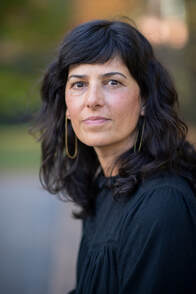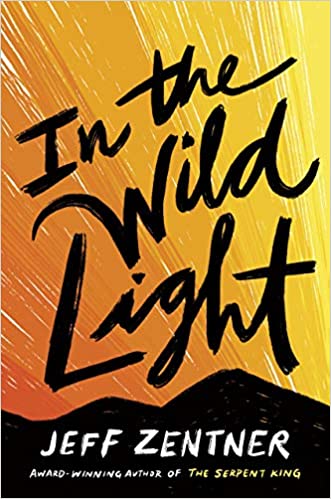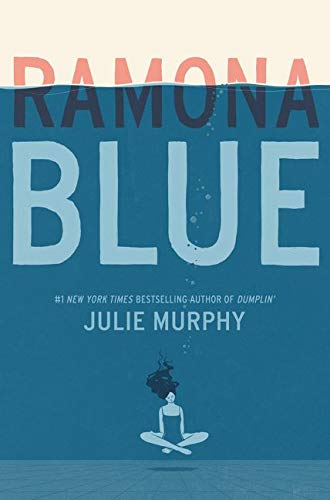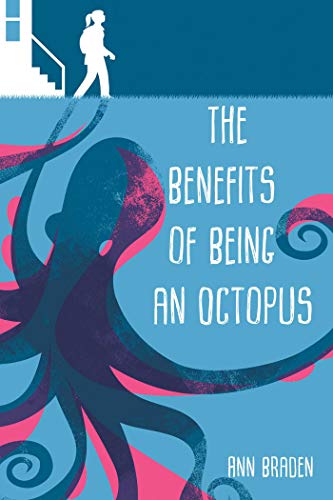| Dr. Sophia Tatiana Sarigianides is Professor & Coordinator of English Education in the English Department at Westfield State University in Western Massachusetts. She teaches courses on young adult literature, English Methods, and the role of race, social class and gender in the ELA classroom. She is the co-author, with Dr. Carlin Borsheim-Black, of the 2019 book, Letting Go of Literary Whiteness: Antiracist Literature Instruction for White Students, winner of AACTE's 2022 Outstanding Book Award. |
As with any dominant ideology, middle class and capitalist values creep into every available crevice and artifact of our lives. YAL is no exception as a reflection–and/or a potential site of resistance–to dominant social class values and assumptions.
But if I were asked to explain even my opening line here in January when I began teaching a semester-long graduate course for in-service ELA teachers on the topic of social class in ELA teaching, I could not have done so.
So many of us who might feel pretty steady addressing gender, sexuality, race in literature, likely still stumble when it comes to social class. What is there to say about social class? How might YA texts give us a site to engage with this important social issue?
Last night, in our last session for the semester, I checked in with the brilliant teachers in the room to confirm which key concepts around social class resonated the most and felt like they could apply instantly to their teaching. A round of nodding heads confirmed that learning about class-based injuries and how they connect to cultural capital resonated with them from the start.
Class-based injuries
Experiencing class-based injuries is a central feature of just about any story focused on social class, especially if it is from a working class perspective. Understanding what it involves and how it’s connected to cultural capital opens up a wealth of opportunities to more deeply study characterization, conflict and theme in working-class YA novels.
Class-based injury is the suffering that an individual endures as a result of not having the cultural capital–the practices, or materials, or associations–that come with middle or upper-class standing (Bourdieu, 1986). Such suffering usually comes into higher relief when someone of lower-class standing finds themselves in a space or around people of higher social class standing. Schools, as middle class institutions, are such sites for many working class youth. But there are many others as well and recognizing them in YA texts affords us great opportunities for deep discussions about social class and what causes discomfort and pain around social class differences.
Next, I will share a few ways to see facets of class injury in some YA novels.
Class injury through language
In Jeff Zentner’s In the Wild Light, Cash, under extraordinary circumstances, leaves his rural Tennessee small town to attend a posh Connecticut prep school with his best friend, Delaney. There, in addition to suffering in general as a scholarship student, Cash must share a dorm room with Tripp, a politician’s son, who is in the room the first time Cash calls home and speaks to his beloved grandfather who raised him. Cash holds his conversation with his Papaw on speaker phone, and when he is done, and is feeling just a bit better after being so far from home for the first time, his roommate comments. “‘Ep thar,’” Tripp says, smirking…”’It’s how your gramps says
“up there.”’”
Even as a poor, rural youth in his home community, no one had ever humiliated his Papaw for the way he spoke before. This source of class-based injury comes from rubbing right up against tremendous class privilege and a sense of entitlement from his wealthy roommate. But the exact site of injury that is inflicted here is language–one of the foremost repositories of class standing as we well know since Shaw’s Pygmalion. Paying attention to class-based injuries through language is one way to open up discussion around social class difference and its implications.
Some questions that a scene like this could raise for discussion might include:
•How does language preserve social class identity?
•How does language reflect societal norms around social class?
I have enjoyed Julie Murphy’s Ramona Blue for years as a great text for teaching about bisexuality that also does not shy away from race issues. But the main facet of this story centers on the experiences of Ramona, who lives in a post-Katrina trailer in Louisiana with her father, her pregnant sister, and the baby’s father. Though smart and determined, Ramona has no plans for after senior year. All she can think of for a future is working even more hours to have money to help her sister support the baby since their family is already struggling financially.
So when Ramona’s childhood friend, Freddie, who is Black, moves into town for good with his grandmother, who is solidly middle class, some of their interactions start to churn up conflicts that center around social class.
For example, when Freddie invites Ramona to join him and his grandmother to swim, so he can keep up his practice since their school does not have a swim team like his old one, Ramona’s first thought is: Why would I exercise when I am on my feet all the time for my three jobs? Here, Ramona’s thoughts expose the way that “exercise” is a middle class concept that relies on leisure time. But how many experiences or expectations like this might readers not see as classed experiences without some guidance?
Both of these novels invite us to consider questions like:
•How are school-related expectations classed?
•How are college expectations of leisure activities for “well-rounded” students classed?
•How might schools unknowingly inflict class-based injuries?
Ibi Zoboi’s Pride, a “remix” of Pride and Prejudice, invites a very complex examination of the question of what causes class-based injury. In Pride, the scene of class conflict centers on the role of the bourgeoisie–the wealthy Darcy family that renovated the dilapidated building across the street and moved into the neighborhood’s first “mini-mansion”. The proletariat in this story is the Benitez family of five Haitian-Dominican sisters and their parents who are renting an apartment across the street in Brooklyn’s Bushwick.
In Zoboi’s hands, class-based injury–the pain resulting from not having the cultural capital to successfully “pass” in upper-class settings and circumstances–results directly from gentrification. Once the Darcys occupy their new mini-mansion in what has been a poor neighborhood, Zuri Benitez, the protagonist, starts to register the impact immediately.
“Our family gets along with every single person on this block, which makes block parties run smoothly; which makes walking home when it’s dark real safe; which makes walking to the bodega in a night scarf and pajama pants not a big deal. The Darcys moving in changes all that” (46).
Though she does not explain this explicitly, Zuri recognizes the way that prior classed actions like leaving the house in sleepwear or yelling out of the window for a sibling can no longer take place without the scrutiny of a new wealthy gaze of sorts affecting everyone’s actions. Though ample examples of the kinds of class-based injuries you might expect take place in this novel, too–where Zuri is insulted by the stuffy Darcy grandmother for her clothing and her demeanor–it is this, more subtle recognition of potential class-based injury that makes Zoboi’s treatment of social class quite sophisticated.
Some questions this text invites:
•What is the cause of class-based injury in the story?
*What facets of cultural capital are the cause of the class-based injury?
•How, if at all, does the protagonist heal from the class-based injuries?
•Does the novel offer any larger explanations or solutions for the class-based injuries?
Though seemingly not as urgent as attending to matters tied to race and, with the current political climate in conservative states, sexuality and gender, social class nonetheless intersects with all of these social categories making an understanding of its contours critical to a range of social justice goals. One simple way to begin to make a foray into the complex world of engaging social class in ELA is recognizing how many facets of working-class YA stories cannot be analyzed or appreciated without taking note of sites of class-based injury.
References & Additional Resources
Bourdieu, P. (1986). The Forms of Capital. In Richardson, J. (Ed.) Handbook of Theory and Research for the Sociology of Education, 241-258.
Godard, N. (2022). Beyond Marx: Cultural Social Class Analysis in the ELA Classroom. English Journal, 111(4), 20-26.
Parton, C. (2022). Exploring Place- and Social Class-Based Ways of Knowing. English Journal, 111(4), 27-33.






 RSS Feed
RSS Feed